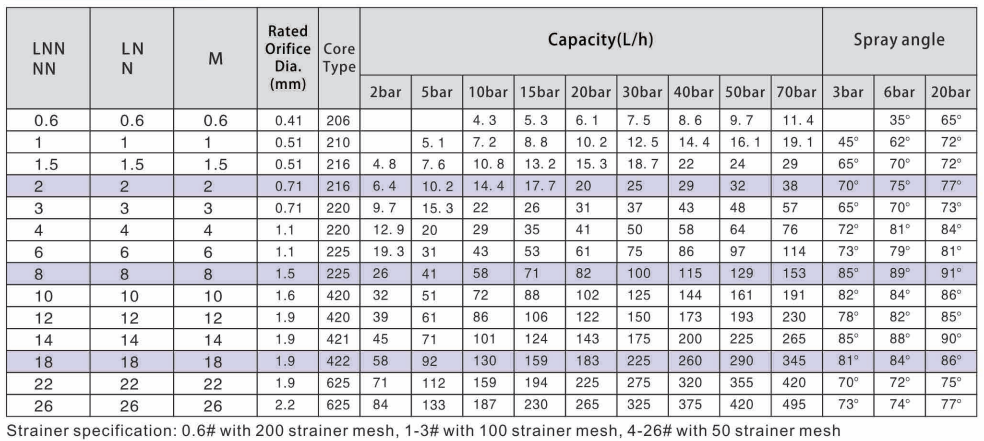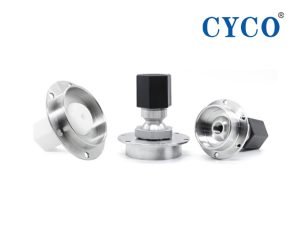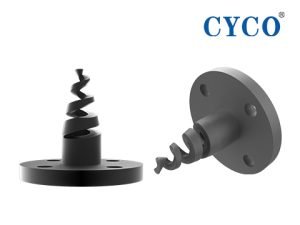Overview
Fine atomizing nozzle, as a key component in the spray system, has been widely used in industry, agriculture, environmental protection and other fields. With the continuous progress of science and technology, a variety of new fine atomizing nozzles are also emerging.
This article will introduce the principle, classification, selection and performance evaluation of the nozzle in detail, which will help readers to better understand and select the appropriate fine atomizing nozzle.

Principle of the nozzle
A fine atomizing nozzle is a device that uses pressure to break up liquid into tiny droplets and form a foggy spray. The liquid is pressurized in the nozzle, then passes through the channels and orifices inside the nozzle, and is eventually ejected at a certain speed to form droplets. These droplets are typically between 5-10 µm in diameter.
Classification of the nozzle
According to different applications and design features, fine atomizing nozzles can be generally divided into the following categories:
1. By spraying method: pressure nozzle and gravity nozzle. Pressure nozzles use pressure to eject the liquid, while gravity nozzles use gravity to eject the liquid from the top to the bottom.
2. By structural characteristic: rotary nozzles and vibratory nozzles. Rotary nozzles form droplets by centrifugal movement of the liquid through a rotating mechanism. Vibratory nozzles form tiny droplets by vibrating the liquid with a vibrating mechanism.
3. By application: ordinary nozzles, explosion-proof nozzles, environmental protection nozzles and so on. Ordinary nozzles are generally used for general industrial and agricultural; explosion-proof nozzles are used for flammable and explosive occasions; environmental protection nozzles are used in environmental protection areas, such as water mist dust reduction.

Selection of the nozzle
In the selection of fine atomizing nozzles, you need to select the model according to the actual application requirements.
The following are a few aspects to consider when selecting the model:
1. The use of spray: different spray use need to choose different types of nozzles. For example, ordinary spray can choose rotary nozzle or gravity nozzle; explosion-proof spray needs to choose explosion-proof nozzle; eco-friendly spray needs to choose eco-friendly nozzle.
2. The effect of spray: the spray effect mainly depends on the diameter and uniformity of the droplets. Different spraying effects require the use of different structures of nozzles. For example, the need for smaller droplets and higher uniformity of the spray effect, you can choose the rotary nozzle; when you need larger droplets and lower uniformity of the spray effect, choose the gravity nozzle.
3. The nature of the liquid: the viscosity and corrosiveness of the liquid will also have an impact on the selection. For example, for the higher viscosity of the liquid, you need to choose a higher pressure nozzle; and for the more corrosive liquid, you need to use nozzles made of corrosion-resistant materials.
4. The pressure of operation: it directly affects the spraying results of the liquid and the size of the droplets. In general, the higher the working pressure, the smaller the droplets, and the higher the energy consumption and use cost of the equipment. Therefore, it is necessary to choose the appropriate working pressure according to the actual demand.
5. The conditions of installation: different installation conditions require the use of different types of nozzles and supporting equipment. For example, for small space, you need to choose a smaller nozzle and supporting equipment; for overhead operation, you need to choose a nozzle with a long arm.
Performance evaluation of the nozzle
When selecting a fine atomizing nozzle, here are a few aspects to consider when evaluating its performance:
1. Evaluation of spraying effect: mainly includes droplet size, uniformity, coverage area and so on. Well spraying effect can improve the working efficiency and reduce the waste of resources.
2. Evaluation of work stability: refers to the probability of failure and life of the nozzle in the working process. Better work stability improves work efficiency and reliability of use.
3. Evaluation of corrosion resistance: mainly including the length of service time and corrosion resistance. For some corrosive liquids, you need to choose the nozzle made of materials with better corrosion resistance.
4. Ease of maintenance: refers to the ease of cleaning and maintenance of the nozzle during use. Proper maintainability reduces cost of operation and minimizes downtime.






